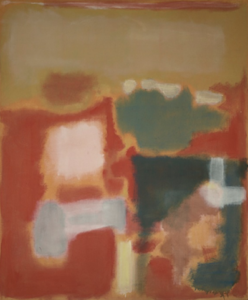Today’s post comes from Lina Kavaliunas, Vassar College class of 2013 and Art Center student docent.

Most questions at the Art Center can be answered by the collections database. How many works of art by Matisse are there in the collection? Thirty-three. When did we acquire the popular painting, Shadow Decoration? 1887 (the same year it was painted by Charles Courtney Curran). How tall is Henry Moore’s Double Standing Figure? Eighty-seven inches (over seven feet tall). Art Center staff, Vassar students, scholars, and visitors turn to the online collections database to look at images and gather information about the collection. The ability to search quickly for an image is the result of over twenty years of work by a dedicated team at the Art Center.
It all started in 1989 when the museum was still housed in Taylor Hall. Plans for the construction of the new Art Center building necessitated the establishment of a visual record of each and every object. Joann Potter, Registrar and Collections Manager, recalls “Since only several hundred photos existed for the 9,500 objects in our possession, we thought it necessary to have a visual record of each and every object primarily for insurance purposes” since many of the objects were being sent off-site while their new home was being built. This first project resulted in the image documentation of all objects in the collection. They were low resolution, but they were the best results available from the technology of the time. The most recent imaging projects were driven by greater information access needs, including the availability of publishable quality images. The better quality images continue to reduce handling, enhance the ability to document states of object preservation, and lastly, they will hopefully aid in the development and management of exhibitions in the future.
In 2010, with Nikon D3X in hand, Chip Porter started a new phase of documenting the collection. Mr. Porter remembered, “When the project started about eight years ago the camera had to be connected to a computer. At that time, when USB 2.0 devices were not common, the connection was via a fiber optic set of cables.” This setup was a bit cumbersome. Today a smaller camera is being used. Mr. Porter pointed out several advantages of this new device: “It has auto-focus and live view on the back of the camera, similar to a consumer model of today. Both of these features, as well as much improved software, help to speed up the workflow.” Further, this new camera has about 40% greater resolution and file size and costs about 1/5 as much as the original project camera, so it’s speedy, high-tech, and cost-effective.

Photographing stationary objects is not without its challenges. Matching the color of the digitized image to that of the actual object is essential. This is achieved by including a “color checker card” somewhere in the picture. Mr. Porter explained “This works something like the white balance in a video camera. There are several shades of gray from white to black as well as a complete color palette…When a graphic designer works on producing a printed catalog, for example, this color and grayscale reference is helpful in translating the digital file to the printed page.”
Another challenge of the process is preparing the works for imaging. Enter Karen Hines and Matthew Woodard. Ms. Hines locates and organizes the works of art for Mr. Woodard to set up in the photography studio. Ms. Hines and Mr. Woodard explained the nuances of the process including how paintings have to be removed from their frames to ensure that there is no shadow on the image. Together with Mr. Porter, they figure out the best method for photographing an object, taking into consideration its size, appearance, and condition. For example, white jade cannot be photographed on the standard white backdrop. Each of the team members lends his/her expertise to make sure the set up has the right background and lighting for each work of art.
The current project is set to end this Friday, December 17th. Over the course of the seven-month closing 2,625 works have been imaged. Approximately 9,000, or half of the collection has now been imaged.




